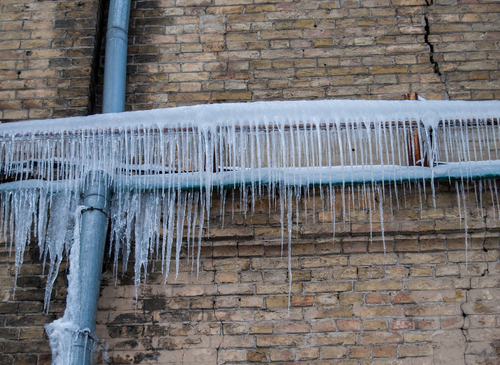Prevent Frozen Plumbing in Winter: Professional Strategies
Prevent Frozen Plumbing in Winter: Professional Strategies
Blog Article
They are making a number of good pointers regarding How to Prevent Your Pipes From Freezing overall in this article beneath.

Cold weather can wreak havoc on your plumbing, specifically by freezing pipelines. Right here's exactly how to prevent it from happening and what to do if it does.
Intro
As temperature levels decrease, the risk of frozen pipes rises, possibly resulting in costly fixings and water damage. Understanding just how to avoid frozen pipelines is essential for property owners in cool climates.
Understanding Frozen Pipes
What causes pipes to ice up?
Pipelines freeze when subjected to temperature levels below 32 ° F (0 ° C) for extended periods. As water inside the pipelines ices up, it expands, taxing the pipeline walls and possibly causing them to break.
Dangers and problems
Frozen pipes can bring about water system disruptions, home damages, and costly repair services. Burst pipes can flooding homes and cause substantial architectural damage.
Indications of Frozen Pipes
Determining icy pipelines early can avoid them from breaking.
How to identify frozen pipelines
Seek decreased water flow from faucets, unusual smells or sounds from pipes, and visible frost on subjected pipelines.
Avoidance Tips
Shielding prone pipes
Wrap pipelines in insulation sleeves or utilize heat tape to protect them from freezing temperature levels. Focus on pipelines in unheated or outside areas of the home.
Home heating methods
Maintain indoor spaces properly warmed, particularly locations with pipes. Open cabinet doors to permit warm air to flow around pipes under sinks.
Shielding Outside Pipes
Garden hoses and outside faucets
Disconnect and drain pipes garden hoses prior to wintertime. Install frost-proof faucets or cover outside taps with protected caps.
What to Do If Your Pipes Freeze
Immediate activities to take
If you think icy pipes, maintain faucets available to alleviate stress as the ice melts. Utilize a hairdryer or towels taken in hot water to thaw pipes slowly.
Long-Term Solutions
Architectural changes
Consider rerouting pipelines far from outside walls or unheated areas. Add added insulation to attic rooms, cellars, and crawl spaces.
Updating insulation
Buy high-quality insulation for pipes, attics, and walls. Appropriate insulation assists preserve constant temperature levels and lowers the threat of frozen pipes.
Conclusion
Preventing frozen pipelines calls for aggressive actions and fast actions. By comprehending the causes, signs, and preventive measures, property owners can protect their pipes throughout cold weather.
5 Ways to Prevent Frozen Pipes
Drain Outdoor Faucets and Disconnect Hoses
First, close the shut-off valve that controls the flow of water in the pipe to your outdoor faucet. Then, head outside to disconnect and drain your hose and open the outdoor faucet to allow the water to completely drain out of the line. Turn off the faucet when done. Finally, head back to the shut-off valve and drain the remaining water inside the pipe into a bucket or container. Additionally, if you have a home irrigation system, you should consider hiring an expert to clear the system of water each year.
Insulate Pipes
One of the best and most cost-effective methods for preventing frozen water pipes is to wrap your pipes with insulation. This is especially important for areas in your home that aren’t exposed to heat, such as an attic. We suggest using foam sleeves, which can typically be found at your local hardware store.
Keep Heat Running at 65
Your pipes are located inside your walls, and the temperature there is much colder than the rest of the house. To prevent your pipes from freezing, The Insurance Information Institute suggests that you keep your home heated to at least 65 degrees, even when traveling. You may want to invest in smart devices that can keep an eye on the temperature in your home while you’re away.
Leave Water Dripping
Moving water — even a small trickle — can prevent ice from forming inside your pipes. When freezing temps are imminent, start a drip of water from all faucets that serve exposed pipes. Leaving a few faucets running will also help relieve pressure inside the pipes and help prevent a rupture if the water inside freezes.
Open Cupboard Doors
Warm your kitchen and bathroom pipes by opening cupboards and vanities. You should also leave your interior doors ajar to help warm air circulate evenly throughout your home.
:strip_icc()/snow-outdoor-faucet-pipes-4af65d1e5e904fb1aa7bf74071fe5d89.jpg)
I discovered that review about Prevent Frozen Pipes when browsing on the search engines. Are you aware of anybody else who is sincerely interested in the niche? Take a moment to share it. I enjoy reading our article about How to Prevent Your Pipes From Freezing.
Call Today Report this page